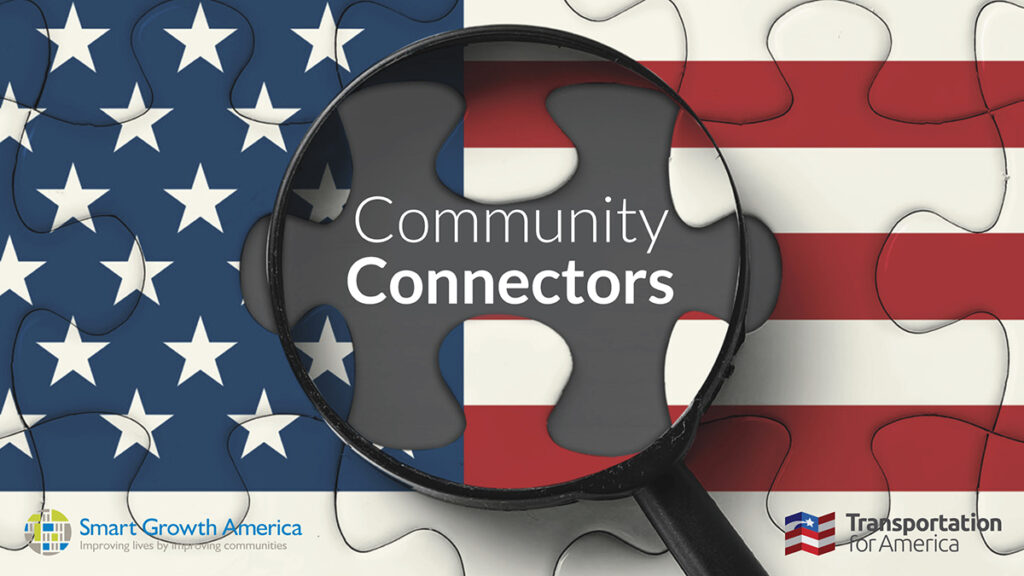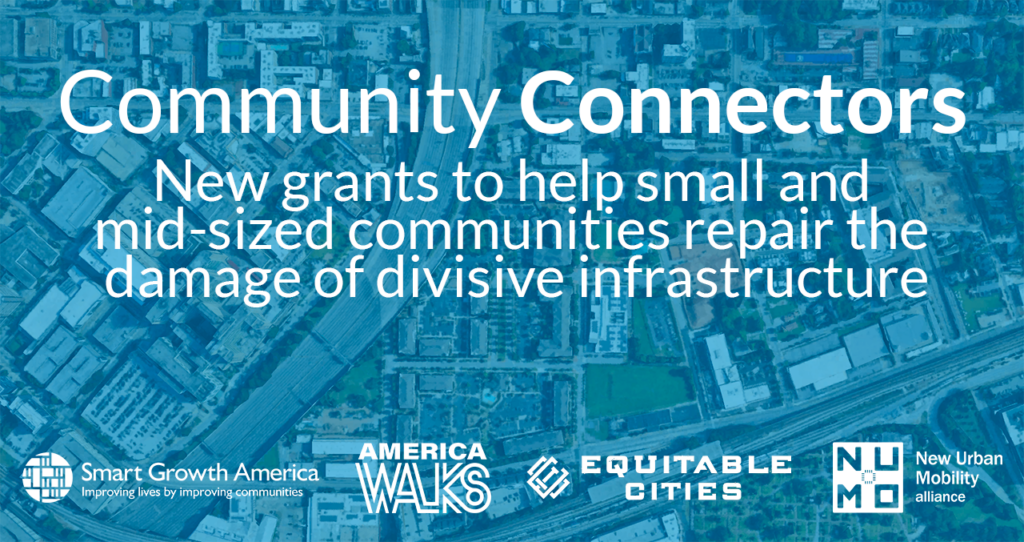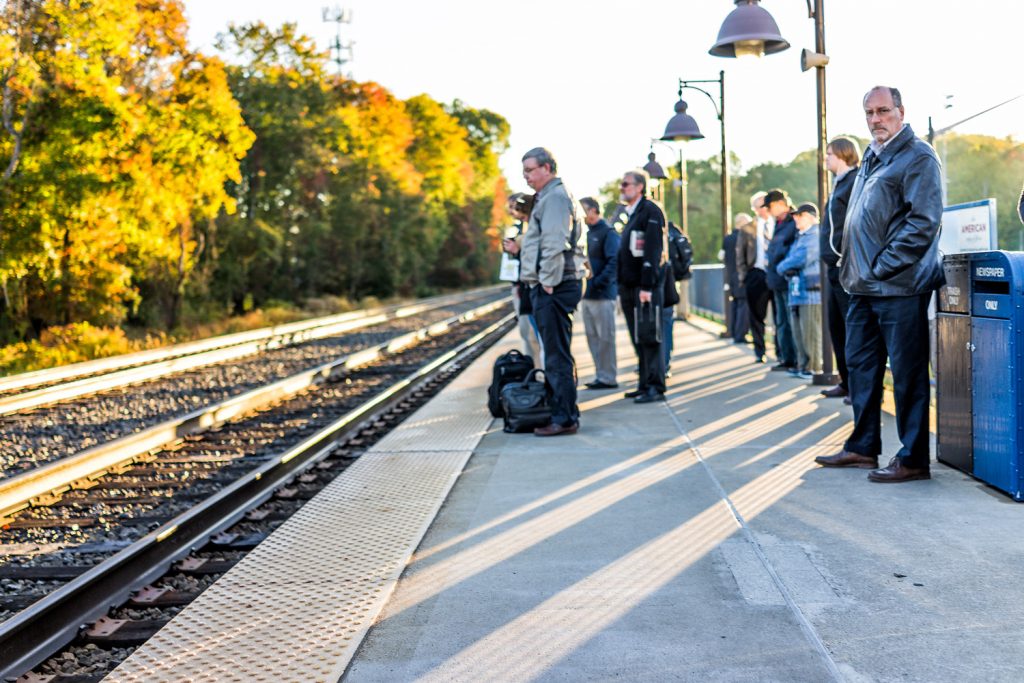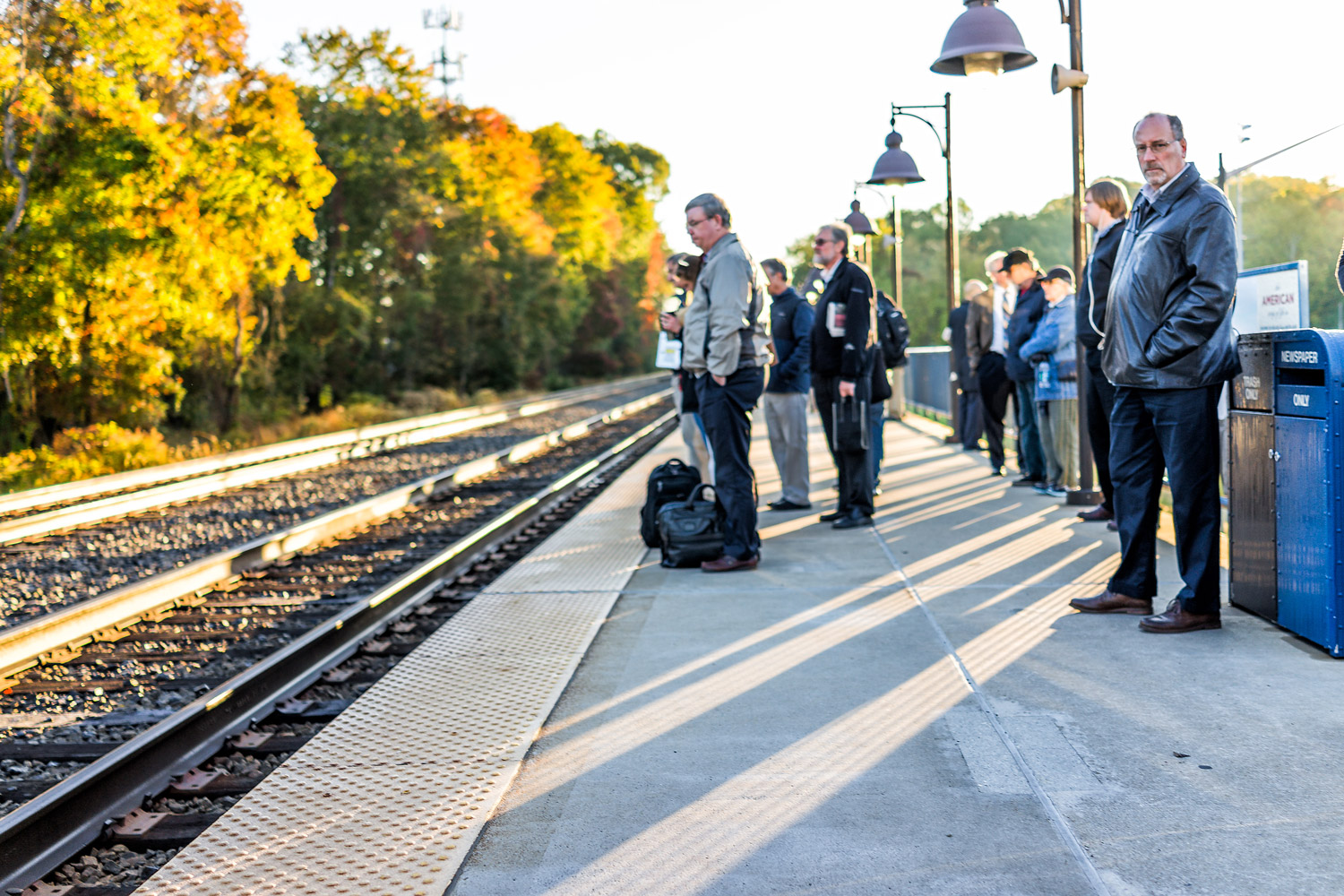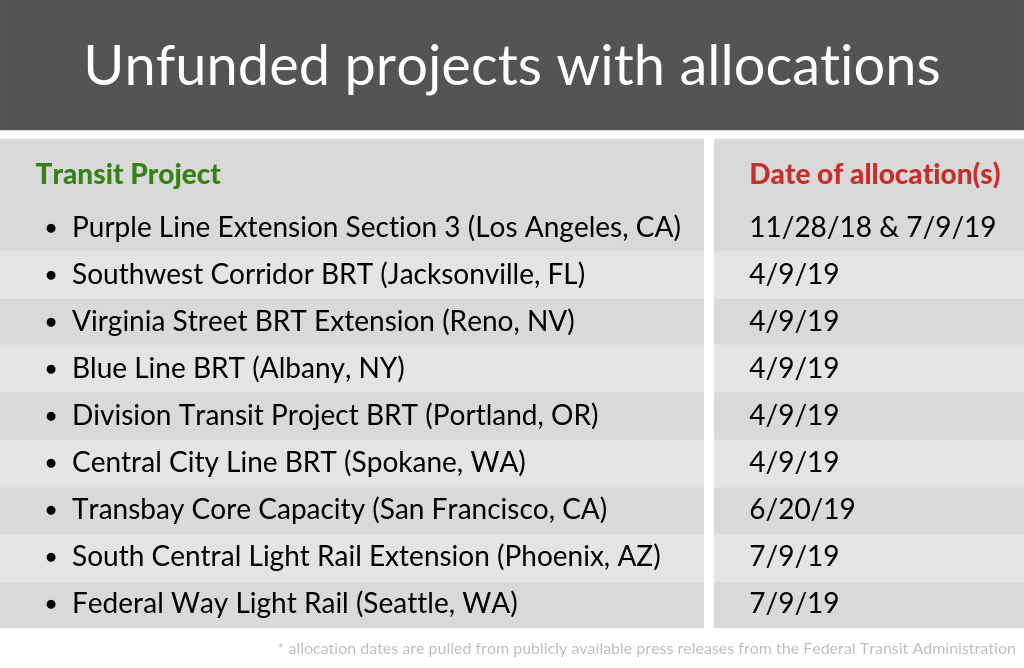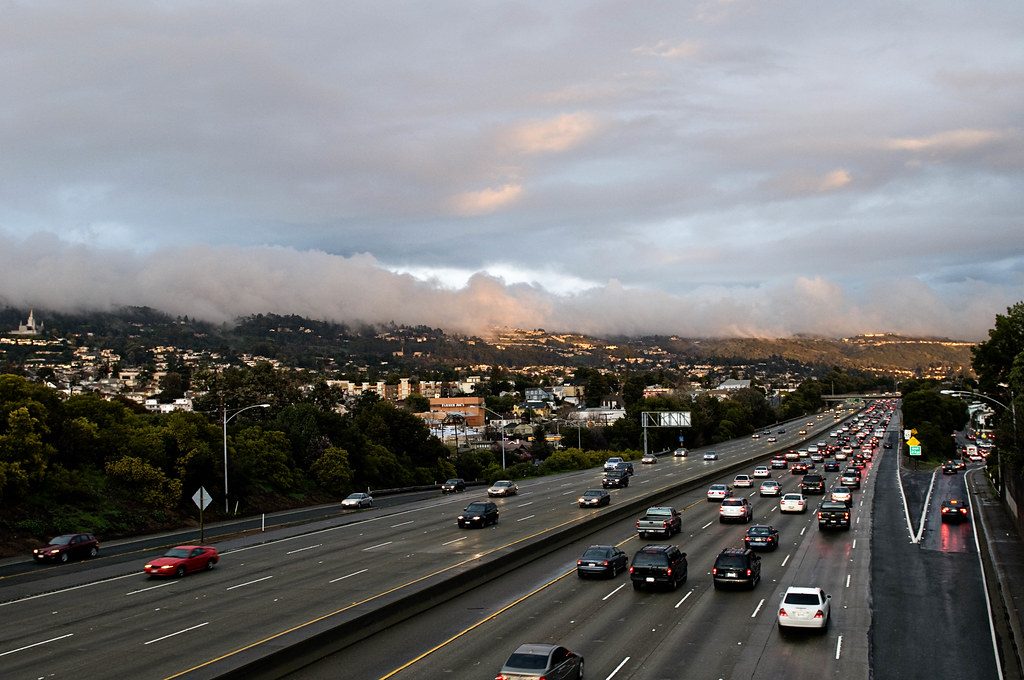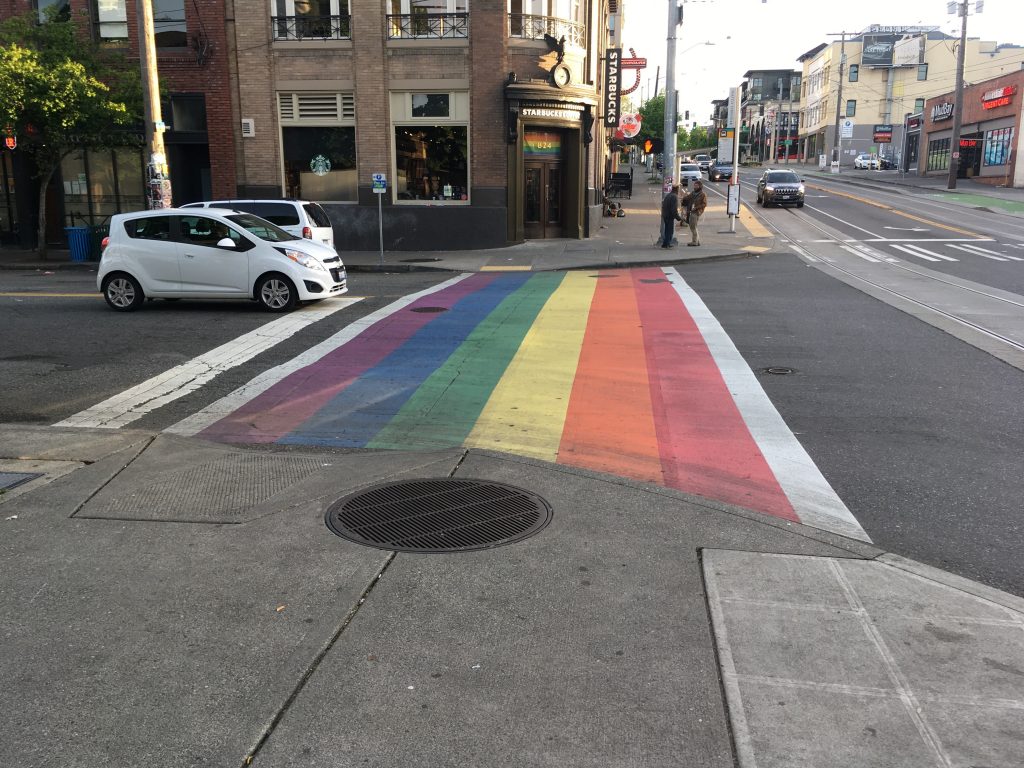Transportation for America is pleased to announce that Bozeman, Montana; Buffalo, New York; and Mariposa County, California have been selected to receive State of the Art Transportation Trainings. These three communities will each receive tailored technical assistance to equip them to utilize arts, culture and other creative approaches for solving specific transportation problems.
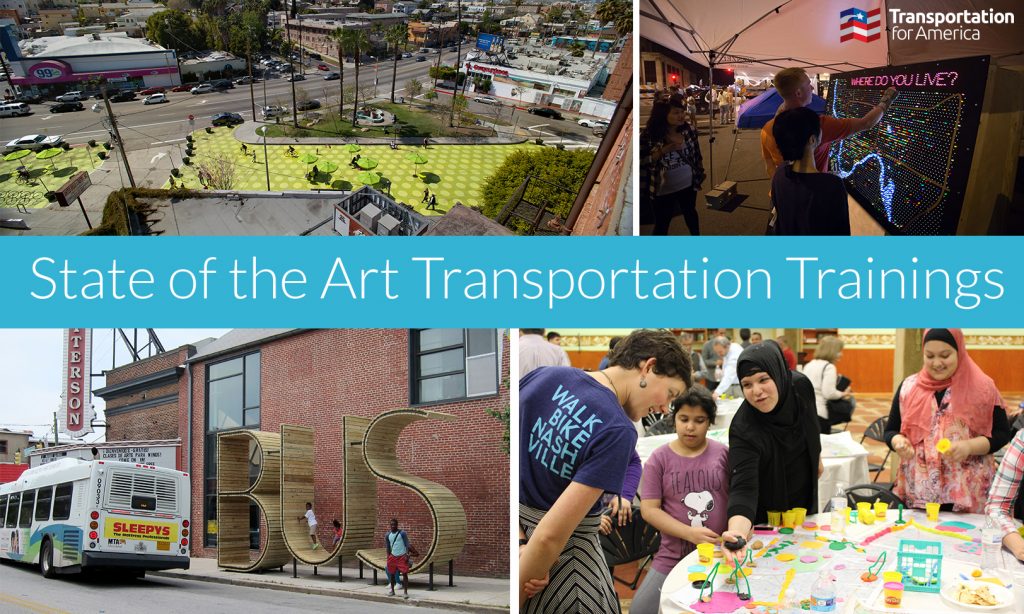
T4America’s State of the Art Transportation Trainings are made possible through funding from the National Endowment for the Arts and ArtPlace America, in collaboration with Americans for the Arts.
Why arts and culture? T4America deeply believes that artistic involvement can help solve entrenched transportation problems by thinking outside the manual and bringing in fresh approaches to the process. It can help heal communities divided by destructive infrastructure, generate more local buy-in for transportation projects, bring diverse constituents to the table, and create a sense of place that reflects local values of the communities transportation systems serve.
“With more than 40 communities applying for these workshops, we were struck by the range of inspiring ideas that communities have for incorporating arts and culture into the transportation planning process. These three places rose to the top of a very competitive pool, and we’re eager to help equip them to effectively collaborate,” said Ben Stone, director of arts and culture for Transportation for America.
“As T4America has gained more real-world experience over the last few years, we’ve seen how artistic and cultural practice can spark the kind of meaningful public engagement required to create transportation projects that more fully serve a community’s needs and celebrate its unique culture. One of the best ways for T4America to have a tangible impact is to find communities that have money to invest in infrastructure and are eager to bring arts into the process, but perhaps lack the expertise to make it happen. We hope these trainings can be a key ingredient to help these three communities produce better transportation projects through more inclusive processes.”
Read more about each of the projects below (adapted partially from their original applications):
Bozeman, Montana
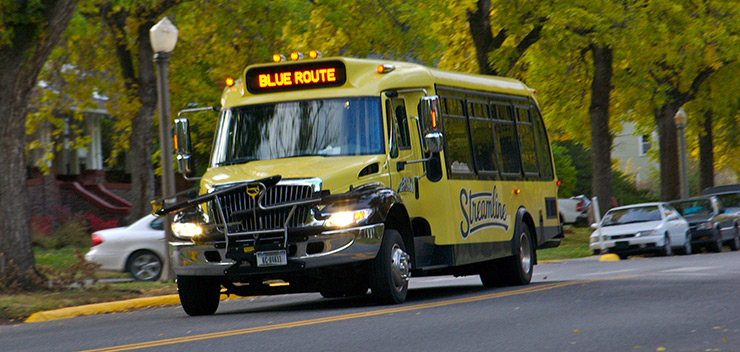
A team from this booming region wants to creatively engage citizens and the arts community in the once-in-a-generation opportunity to imagine the future of a more robust regional transit system. Core to their strategy is harnessing and expanding the expertise of the arts community to build political and public will.
Bozeman is one of the fastest growing micropolitan areas in the country, rapidly evolving into a metropolitan area with a population that is predicted to double again from 100,000 to 200,000 in the next 25 years. They’re on the cusp of creating a metropolitan planning organization to coordinate regional planning efforts across a three county-area. As Bozeman starts trying to think and plan regionally, many of their leaders and advocates want to proactively start developing the relatively small Streamline regional transit system to provide more mobility options, take cars off the road, and reduce the need for expensive new lane miles as the region grows.
With the three main county jurisdictions in the Gallatin Valley all beginning updates of their comprehensive plans this spring, Bozeman’s leadership has an opportunity to engage their citizens and the expertise of the arts community to build political and public will to adequately fund a truly first-class regional transit system.
“The City of Bozeman is thrilled to be selected from among 40 applications across the country to receive one of three State of the Art workshops from Transportation for America,” said Bozeman Mayor Cyndy Andrus. “These workshops will integrate our lively and growing arts community with transit planning and engage citizens from across the Gallatin Valley to support creative and sustainable transportation solutions. Many thanks to Transportation for America for providing us with this opportunity.”
Buffalo, New York
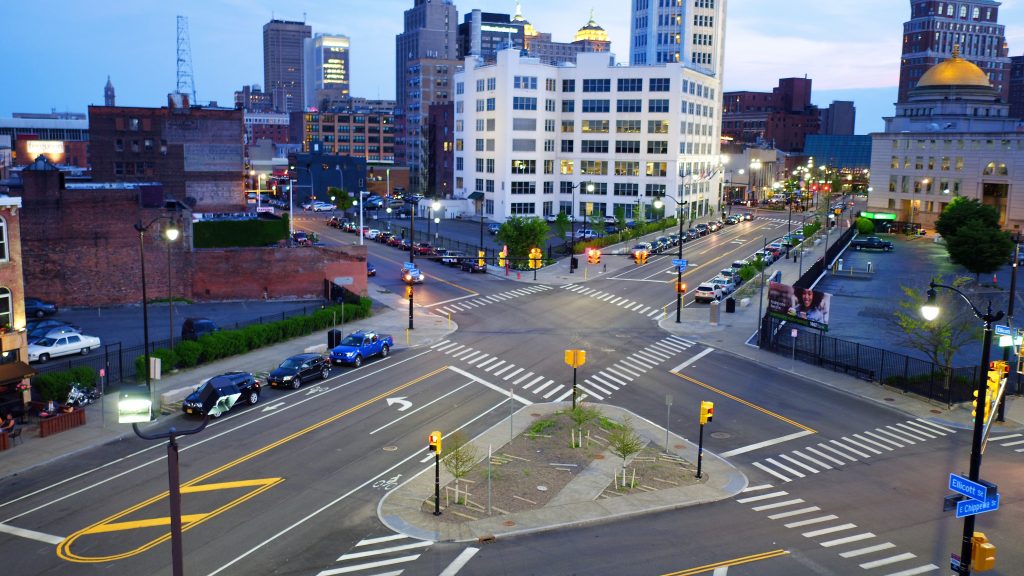
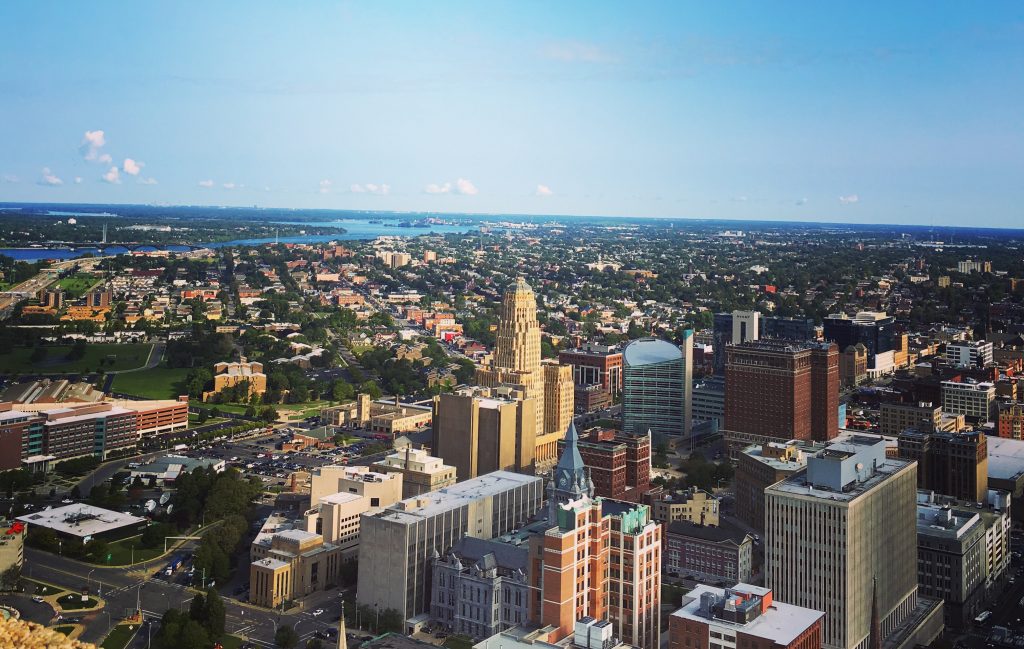
With an existing city ordinance requiring public art to be integrated into all infrastructure investments, the city wants to improve the process by which those projects are developed, helping city engineers and planners more successfully collaborate with artists to create public art that empowers residents to take ownership of their neighborhoods.
In a city that was once an industrial powerhouse but has suffered from years of economic decline, the arts and culture community is still alive and active, and residents are taking ownership of their community once again thanks to the empowerment of neighborhoods, investments in the local economy, and development of infrastructure.
Buffalo is embarking on infrastructure improvements to a 2.5-mile corridor along Main Street that will improve pedestrian crossings, coordinate signals and build a new cycle track to make bicycling safer and more convenient. To ensure that the public art implemented with this specific project is representative of the people of the neighborhoods, aesthetically cohesive, and a functional long-term asset to the community, the city will use the workshop to creatively engage with the Department of Public Works, Buffalo Art Commission, and local community members.
Buffalo’s team hopes that this training will help them learn how to integrate public art in ways that are not only representative of the community, but also improves the quality of life for residents.
“As we continue to re-imagine and grow Buffalo into a city where opportunity is abundant for all people, I am pleased that our community has been given another tool to continue the work that we have been doing to integrate artistic expression into our transportation projects,” stated Buffalo Mayor Byron W. Brown, noting that today’s good news comes as Buffalo’s significant economic development revitalization continues. “I thank Transportation for America and Americans for the Arts for selecting Buffalo as a location to provide hands-on training workshops that will help further our efforts to use arts and culture to build local capacity, expand transportation opportunities and create projects that more fully serve the needs of our residents.”
Mariposa County, California
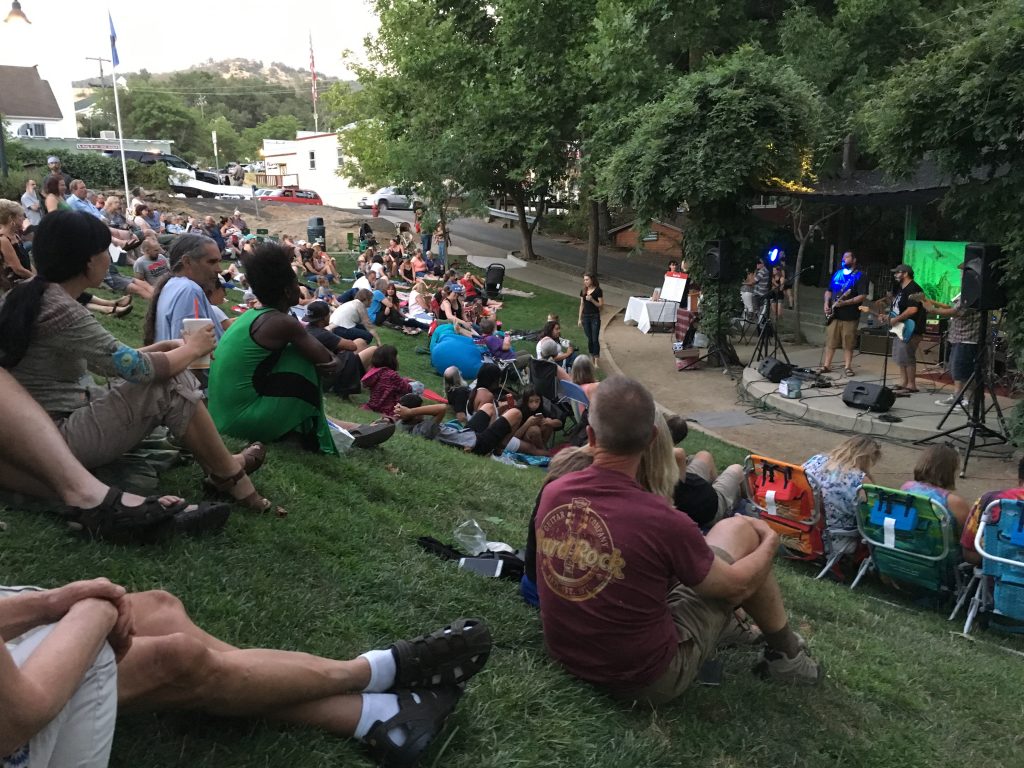
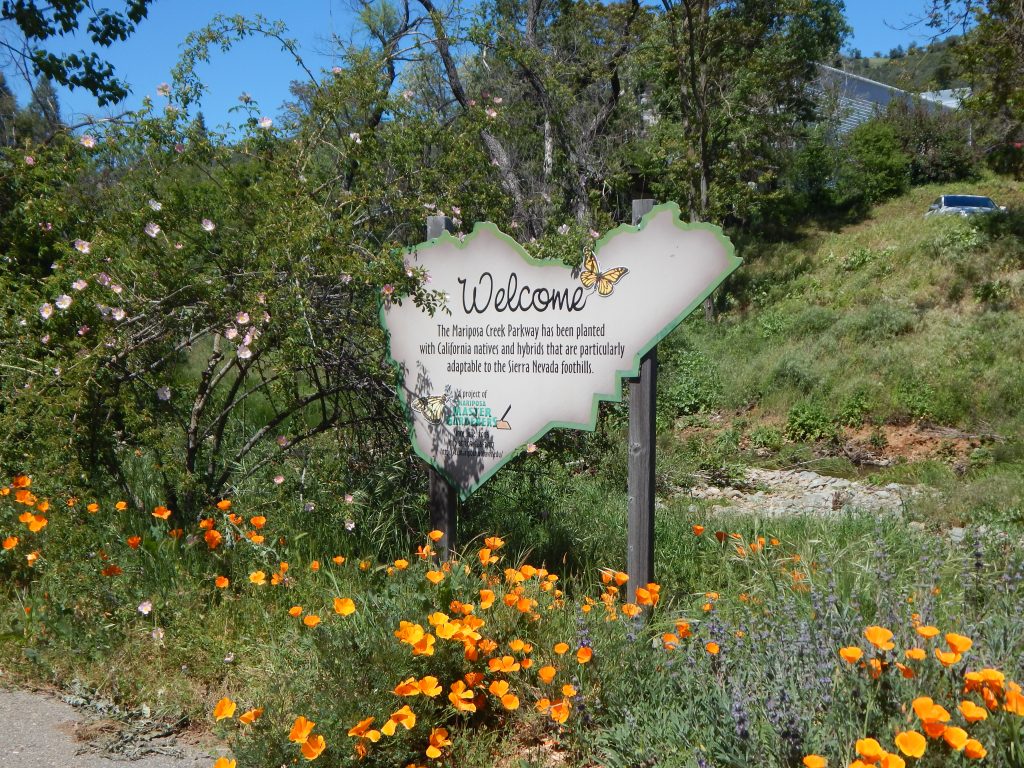
In this small northern California mountain town that serves as a popular gateway to Yosemite National Park, the workshop will bring a wide range of people in the community together to redesign a public space and help incorporate art into the development of a multimodal trail that will link community destinations and encourage healthy living while celebrating local culture and the environment.
Mariposa County occupies 1,463 square miles of the Sierra Nevada foothills at the western gateway to Yosemite National Park and hosts over one million annual visitors. The residents of Mariposa County are older and more likely to be obese than the rest of the state, and have far less access to physical activity than nearly all other California counties. Though the town of Mariposa features pockets of dense, walkable fabric, the bulk of the county is defined by conventional auto-centric land use patterns which, when coupled with extraordinary congestion from park visitors, severely limits mobility and detracts from the sense of place.
The community has long supported building a multi-use path along Mariposa Creek, a 40-mile tributary of the San Joaquin River running through the county, and Mariposa County currently has funding from Caltrans to support the development of portions of this path. With a generational opportunity to build an important piece of infrastructure, the team from Mariposa wants to fully explore the role of art and design in shaping the Parkway, learn more about how to leverage art and artists to influence outreach and engagement during its design and planning, and how to use art to compellingly celebrate the stories and experiences of our community.
“The residents of our community need vibrant, attractive spaces to move through and in which to come together,” said Kevin Cann, Mariposa County Supervisor. “Not only that, but over one million visitors a year experience the town of Mariposa on their way to Yosemite National Park. The Mariposa Creek Parkway can be a tremendous resource for folks of all different backgrounds, and we are excited for this opportunity to expand our community’s capacity to maximize the facility’s value.”
